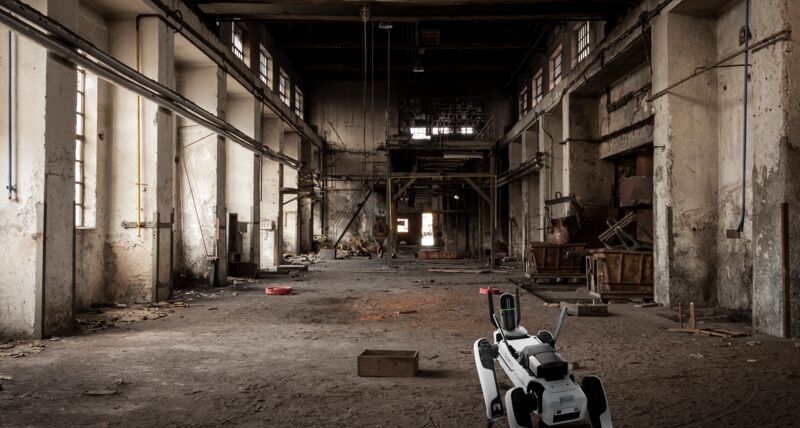While the construction industry remains the largest industry in the global economy, the annual productivity growth has been relatively flat. The profitability is low, with around a 3-5% EBIT margin. We assume that six out of ten major construction projects fail to meet their defined cost and schedule goals.
The building construction sector is still rarely perceived as innovative regarding materials in use, digitising and automating construction methods and processes. There are various reasons. Each building is unique, and building projects, as well as sites, get more and more complex. Construction companies are confronted with extensive regulations. Contracts between clients, contractors and sub-contractors are not properly aligned and harm collaboration. Risks are often passed to others in the supply chain. Inefficient planning, limited standardisation in processes and organisation, and lack of qualified workers also have a negative impact. Furthermore, the continued low productivity slows down investments in technology and digitalisation.
However, the market environment is changing, and technology is progressing, encouraging contractors and clients to re-think working methods, processes, tools and construction material to become more productive but also address the aspect of sustainability.
Trends that will impact the construction industry
Sustainability

This has become one of the most critical trends in the construction industry globally. Sustainability regulations constantly evolve and target different aspects of the construction industry that need to change. Construction companies evaluate themselves to comply with new regulations, from workflows to materials. New regulations target the operation side requiring reducing greenhouse gas emissions and waste in factories and offices or reducing the stress exerted by impure water and air quality from operations. Another important area is the supply chain which needs to be analysed to ensure that all suppliers adhere to specific standards and do not pollute the environment. Reuse and renovation of buildings and its materials is another aspect that can positively impact the environment. The availability of new materials and technologies can even further contribute to achieving sustainability but also productivity goals. But one aspect is key – awareness about our footprints and implement action for a more sustainable future must be a common theme lived throughout companies, organisations, projects and value chains to make a real difference.
Automation

As buildings become more complex with the forms and materials used, the pressure is on construction companies to meet the schedule and budget targets. One way to solve this issue is to adopt new technologies and processes that enable field crews to automate certain tasks where possible. Available robotic solutions already exist that can be programmed to patrol certain areas and generate scans uploaded directly to the cloud. Avvir, for example, a cloud solution that utilises Artificial Intelligence (AI), can analyse and highlight the issues detected automatically. The results are visible and interpretable by the other teams ensuring that the latest data is used as the base for decisions. This allows them to identify issues early and take immediate action to save cost and time and reduce waste. With new technologies and increasing automation the roles, responsibilities and tasks for construction professionals will shift. Capturing, as-built verification tasks and data interpretation become easier, less crew members are required to complete them and can be utilized for other projects and tasks instead. This shift enables construction workers to work more closely with new technologies by steering, monitoring and maintaining them. They will also no longer need to enter dangerous areas as such tools can perform this task.
Collaboration

Data for and from construction sites are often in data silos and not regularly updated or shared with stakeholders. Although much data is generated before and during construction, it is often not digitised, shared among involved parties or used. Ninety-six percent of the data created is not used, according to an FMI study, which shows that collaboration is seriously restricted. In a report from BSTGlobal published in 2019, ninety percent of project managers said they must manually gather status updates from their team members. They highlight what must be done to get the latest revisions and that the status quo is not feasible in the long run. Only some crew members work with the latest revisions and cannot see the changes made previously, which can lead to issues that arise later during construction. A silver lining is that more companies invest in digitising their data and workflows as they realise that efficiency and productivity are increased and costs reduced. This will lead to better collaboration between stakeholders and improve transparency, as the data is readily available.
Efficiency/Productivity
All the trends mentioned above have efficiency and productivity issues in common that need to be addressed and solved by investing in new technologies and methods. With integrated hardware and software solutions that are easy to use, coordination and workflows are improved while reducing costs at the same time. Another challenge is to find skilled workers, which makes it necessary to compensate with simplified digital interactions. Today’s technologies are advancing, making it possible to adopt and operate them with basic training. In the future, efficiency and productivity will steadily increase as technology becomes more sophisticated and requires only little interaction with humans.
An investment for a truly collaborative construction process

Throughout the construction process, from design to maintenance, technologies are available to improve connectivity and efficiency. During the design phase, a Scan-to-BIM workflow using a 3D laser scanner could be used to determine the current situation. Combined with Leica Cyclone FIELD 360 mobile-device app, the captured point cloud can be pre-registered and viewed in the field to verify that everything was scanned and create final deliverables. All the generated data can then be easily shared with the office for further processing with Leica Cyclone REGISTER 360 PLUS and most common design software such as Autodesk, Revit or BricsCAD, which utilise AI for point cloud classification. Once the office has completed its work and created a plan or model, it is ready to be uploaded to an integrated cloud solution such as Bricsys 24/7, a common data environment (CDE).
When the data is in the CDE or a cloud-based construction project management tool like HxGN Smart Build stakeholders can access relevant information and see the latest revisions. The coordination of the different trades throughout the construction process can be improved and decision making based on the latest available information.
Sharing the data from the office with the field crews has become easier with the right digital tools enabling e.g. digital layout. Teams can prepare the layout data in their design software of choice in the office and make it accessible for site crews in the preferred integrated cloud solution of the field software, utilising tools such as Leica iCON iCR70 with the Leica iCON build software. To avoid costly reworks at the end of a project, these tools also come in handy to perform as-built verifications. Because it is essential to identify issues when they arise during the construction process to fix them before it becomes even more expensive.
The software solution Leica Cyclone 3DR provides VDC teams extensive options to utilise point clouds for as-built model creation, progress monitoring and verifications in the office to ensure everything is done according to plan or model and is also kept up-to-date. At the end of the project, the data can be utilised for a digital handover, maintenance and operation of the building to the owner.
There are various other options for progress monitoring solutions that continuously provide updates to stakeholders, from construction photo and video documentation services with Multivista provided on a proprietary software platform from a professional team to solutions from OxBlue with its live-streaming construction cameras. Using an autonomous laser scanning module designed for robotic carriers, such as the Leica BLK ARC, construction workers have the power to put data to work by setting mission paths based on existing drawings or BIM models in challenging and complex environments. This saves time and money as human intervention is reduced while construction workers’ safety dramatically increases. Once the autonomous scanning mission is complete, captured 3D data is ready for further processing and visualisation by uploading to Leica Cyclone or directly from the field to HxDR. This allows construction workers to visualise potential structural repairs and make better-informed decisions for future renovations.
In order to further drive digitalisation in construction it also requires applying new methods and processes on how to manage information and collaborate effectively. The definition of standards and use cases will help to accelerate this. Building Information Modelling (BIM) committees and initiatives such as buildingSMART, Open Design Alliance (ODA), OGC or local initiatives like openBIM are driving the further definition and adoption of open BIM standards for construction projects. To support and encourage the use of BIM, solution providers such as Hexagon apply these standards to their solutions but also help to educate the market in adopting and benefiting from new methods and solutions. Although companies may use BIM, not all working with the same software or data format, they are challenged with time-consuming import and export workflows and risk the loss of information. For an interoperable construction process to work effortlessly, a standard data format everyone inside and outside a company can use and work with is necessary.
The necessity to digitise the construction industry

With a connected and automated digital workflow and supporting technologies, accurate data can be gathered, analysed, and shared with the stakeholders, who can easily access them throughout the entire construction process without the need to use physical information. More and more construction companies invest and establish Virtual Design Construction (VDC) and innovation technology departments within their organisations. They focus on digitising processes, utilising new technologies and establishing partnerships with industry-relevant manufacturers to investigate and develop products, materials, and methods to reduce waste and errors throughout the construction process.
These developments will significantly impact the construction industry with the benefit of becoming more efficient, productive, and sustainable. Adopting digital workflows and new technologies takes time and is an investment, but will benefit construction companies in the long run, ensuring to remain competitive but also attractive as employer with changing expectations and requirements in the upcoming years. The willingness to change and adopt new technologies will be an essential factor for the survival and prosperity of construction companies. Combined with the development of new technologies and materials, the following years could be very exciting for the construction industry.

Romy Maunz
Business Director, Building Field Portfolio
Hexagon














